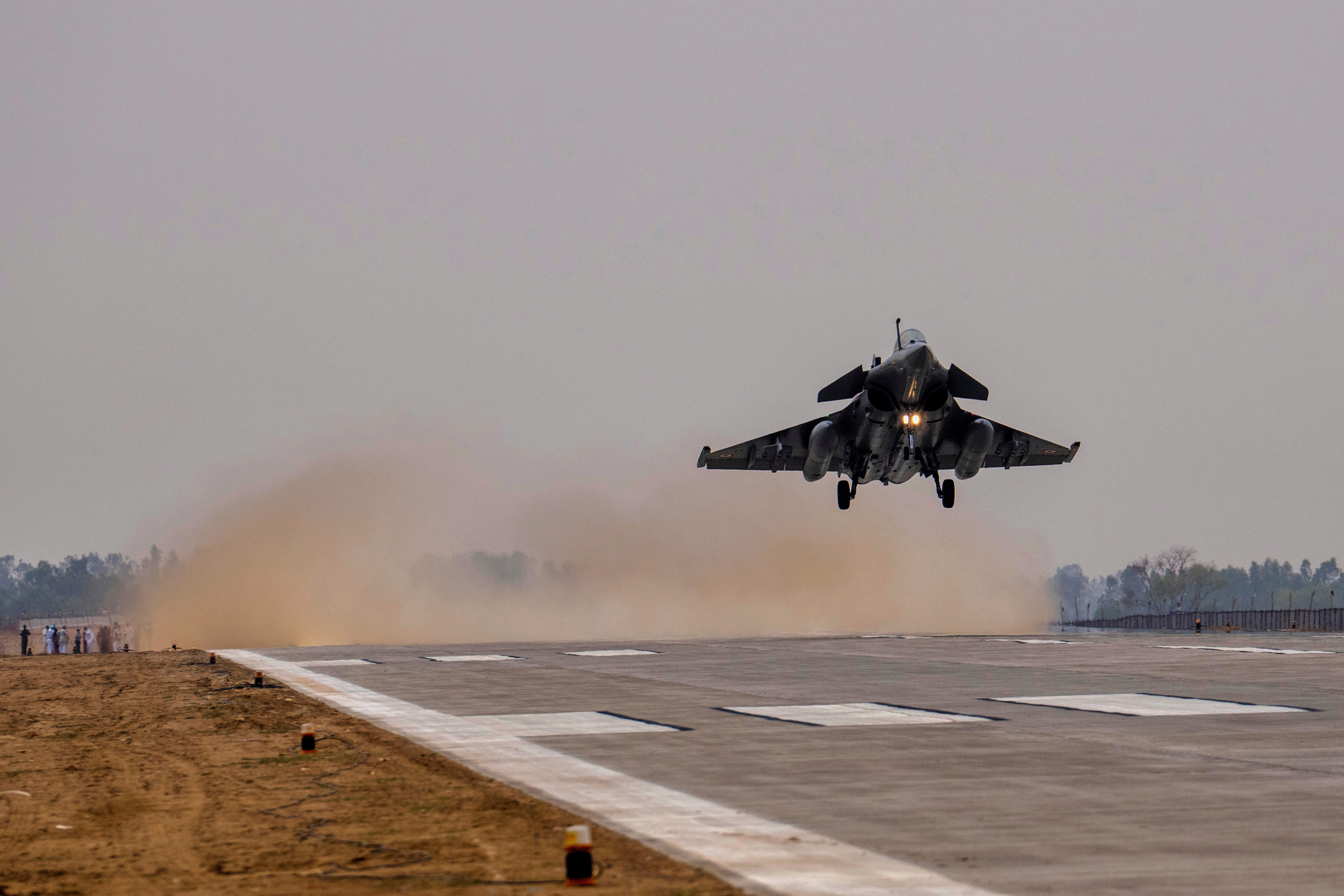
Some 125 Indian and Pakistani fighter jets battled for over an hour in one of the biggest dogfights in recent history, according to a Pakistani security source quoted by CNN.
If the numbers of aircraft were confirmed, it would make it one of the largest air battles since World War Two.
Newsweek has reached out to the Indian and Pakistani governments for comment.
Why It Matters
The scale of the dogfight on Wednesday underscores the intensity of the conflict between the two nuclear-armed rivals—both of which possess some of the world’s largest conventional military forces—and highlights the implications of any further escalation should diplomatic efforts fail to ease tensions that erupted after an attack on tourists in Indian-administered Kashmir.
Rajesh Kumar Singh/AP Photo
What To Know
The “dog fight” between Pakistani and Indian fighter jets, which Pakistani officials say downed five Indian planes, was one of the “largest and longest in recent aviation history,” a senior Pakistani security source told CNN. The Pakistani claim has not been corroborated and could not be immediately verified by Newsweek.
A total of 125 fighter jets engaged in an hour-long aerial battle, with both sides confined to their own airspace as long-range missiles were exchanged at distances surpassing 100 miles, CNN said.
Indian pilots made multiple passes at targets, while Pakistan issued warnings in areas it believed were at risk to minimize civilian harm. Neither side crossed the border, the source said, citing a 2019 clash when an Indian pilot was shot down, captured in Pakistan, and paraded on television—an embarrassment both militaries were keen to avoid repeating.
Air-to-air combat has shaped warfare since the early 20th century and has determined some of the most pivotal moments in modern military history.
World War Two Dogfights
Air battles reached their peak in World War Two although the St. Mihiel Air Battle of 1918 in World War One saw the participation of 500 German aircraft and nearly 1,500 Allied aircraft, according to Norwich University’s list of the 10 largest air battles in military history.
Topping the list of those engagements was the Battle of Kursk in July and August 1943 when Nazi Germany fielded 2,000 aircraft to Russia’s 2,792 as the Russian forces turned the tide of World War Two.
The Battle of Britain in 1940 was another pivotal moment for the use of air power with the smaller British force of 675 planes countering a German force numbered up to 2,800 and in the process helping to prevent a Nazi invasion of Britain.
The 1944 Battle of the Philippine Sea cemented U.S. air superiority, with carrier-based fighters downing hundreds of Japanese aircraft in a rout dubbed the “Great Marianas Turkey Shoot.” Some 1,000 American planes fought with an estimated 700 Japanese aircraft.
Post-war air battles have generally been on a smaller scale, but also significant.
A turning point for aerial combat came with “Black Thursday” in 1951, during the Korean War, exposing the brutal speed and lethality of Cold War-era dogfights. Some 30 MiG 15s with North Korean and Chinese markings, though crewed by Soviet pilots, showed their superiority against an American force several times larger.
In 1982, Israel demonstrated exceptional tactical precision in Operation Mole Cricket 19 in the Beqaa Valley in Lebanon, destroying the majority of Syrian aircraft without suffering a single loss. Norwich University put the Israeli strength at 90 planes to 100 Syrian aircraft.
Also in the Middle East, the 1973 Battle of El Mansoura, between Egypt and Israel, lasted just under an hour and involved up to 164 Israeli planes and 62 Egyptian aircraft. Israel suffered the heavier losses in terms of planes, according to Norwich University, though later turned the 1973 Middle East War.
What Happens Next
Escalating tensions between India and Pakistan have prompted calls from the U.S. and world powers urging both sides to exercise restraint and pursue diplomatic de-escalation.
